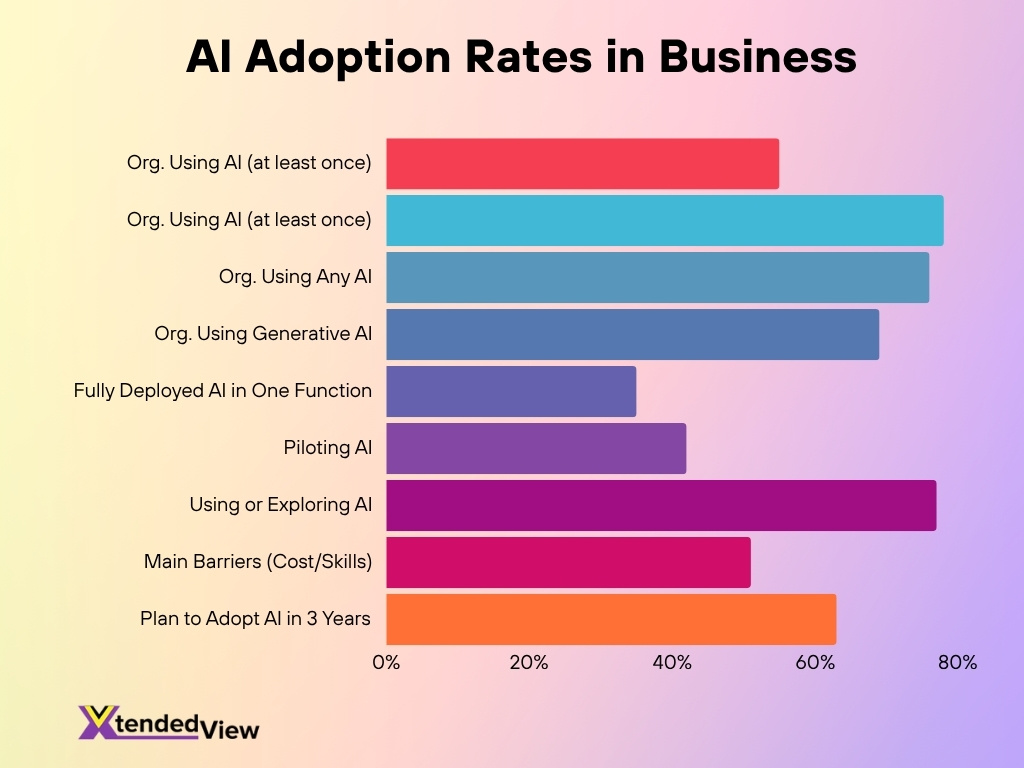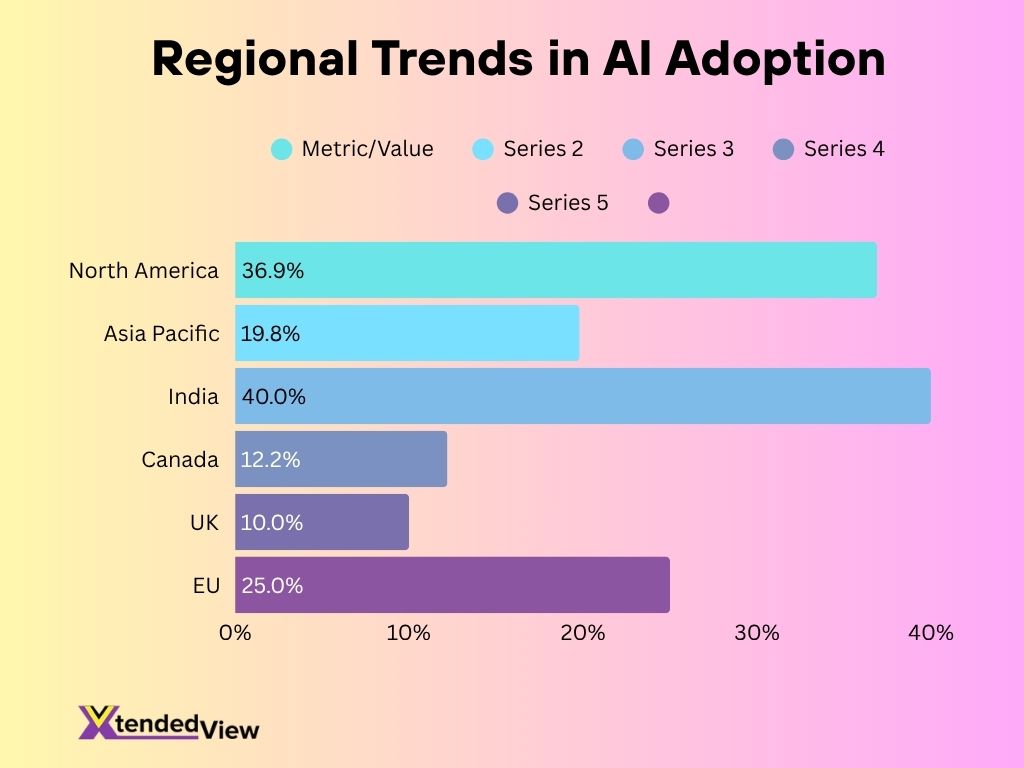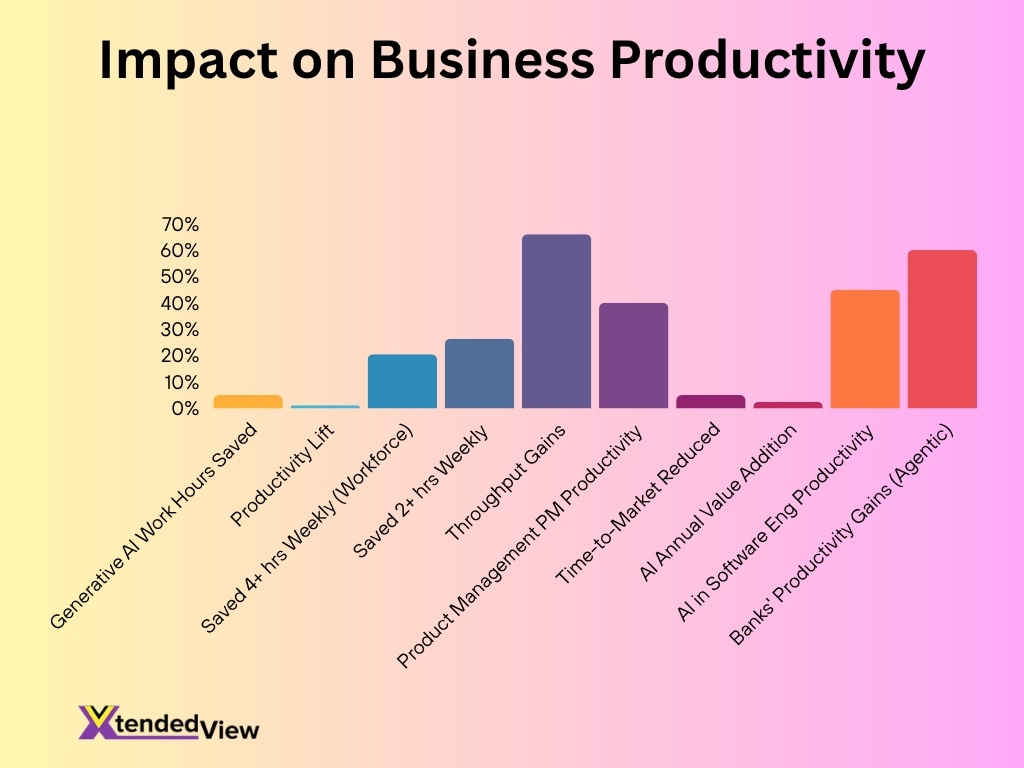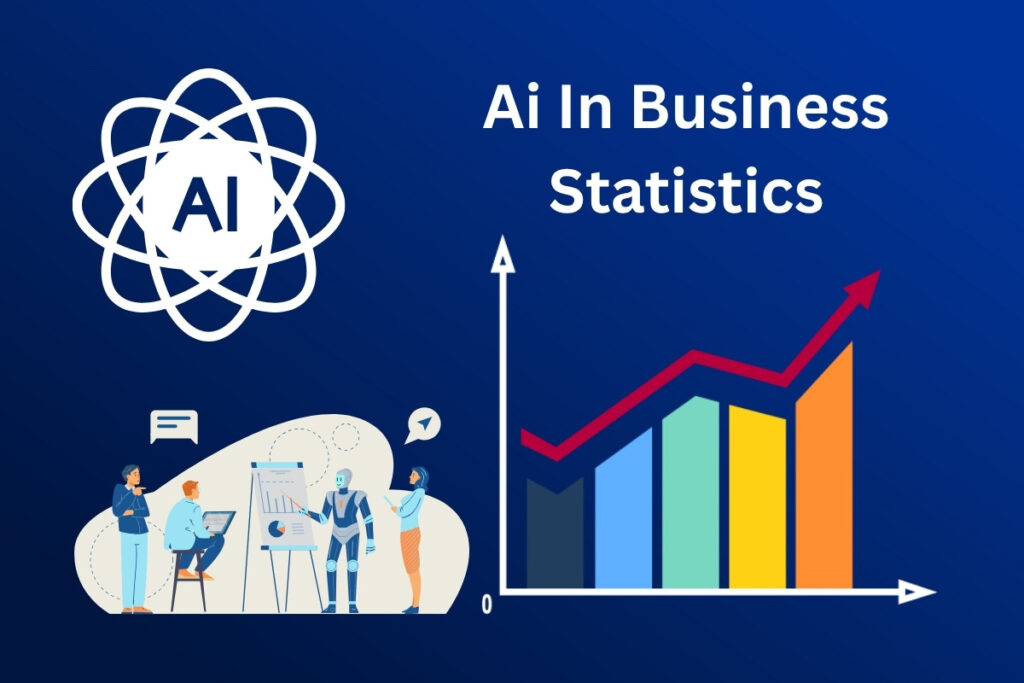Introduction
Artificial intelligence (AI) is no longer niche; it’s deeply woven into business strategies across sectors. Companies are using AI to cut costs, refine customer outreach, and predict market shifts. From personalized marketing campaigns in e-commerce to predictive maintenance in heavy industry, real-world use cases are abundant. Read on to uncover the latest data shaping how AI is transforming business today.
Editor’s Choice
Here are seven standout statistics that set the stage for AI’s current business climate:
- The global AI market is expected to reach USD 638.23 billion in 2025.
- In 2025, generative AI is forecasted to be the fastest‑growing AI segment, growing at a projected CAGR of 22.9 % from 2025 onward.
- In 2024, 78 % of surveyed organizations used AI in at least one business function.
- Across business users, generative AI adoption jumped from 33 % in 2023 to 71 % in 2024.
- 92 % of executives expect to increase AI spending over the next three years.
- Among global organizations, 88 % are measuring the value derived from AI adoption.
- About 87 % of companies now consider AI a top priority in their business plans.
These figures reflect not just momentum but growing maturity in AI use.
Recent Developments
Recent shifts highlight how AI is evolving beyond hype and into measurable impact:
- The number of newly funded generative AI startups nearly tripled in the latest reporting period.
- In 2025, AI investment has become a hedge for national economies, with policymakers citing AI as a buffer against slowdowns.
- Google pledged $15 billion over five years to build an AI hub in India, part of the pattern of giants investing in global infrastructure.
- The European Commission initiated a €1 billion plan called “Apply AI” to accelerate AI deployment in key industries.
- Building “AI gigafactories” is now a priority, with Europe announcing six new facilities to scale GPU capacity.
- Some economists warn of an AI valuation bubble, cautioning that many investments may not yield returns.
- The IMF has flagged a global lack of regulatory and ethical frameworks suited to fast AI progress.
- Executives increasingly demand ROI from AI, not just experimentation.
These developments show AI is stepping into high-stakes infrastructure, policy, and financial domains.
Global AI Market Size and Growth
Understanding market scale is critical to seeing AI’s reach:
- In 2024, the global AI market was valued at USD 638.23 billion.
- Forecasts predict the AI market will grow to USD 3,680.47 billion by 2034 (CAGR ~19.20 %).
- The 2025 AI market is estimated at USD 371.71 billion.
- Projections suggest the AI sector will reach USD 1,811.75 billion by 2030, growing ~35.9 %.
- Some sources place the 2025 AI market nearer USD 243.72 billion, implying variation in estimates.
- By 2030, AI-driven sales are projected to hit USD 1.3 trillion.
- The U.S. AI market alone was around USD 146.09 billion in 2024.
- North America accounted for ~36.9 % of the 2024 AI market share.
- Asia Pacific is expected to grow fast, with a CAGR ~19.8 % through 2034.
Forecasts vary widely due to differing definitions, but the consensus is strong: AI is one of the fastest-growing markets this decade.
AI Adoption Rates in Business
How many organizations are actually using AI?
- In 2024, 78 % of organizations reported AI usage in at least one function.
- That’s up from ~55 % in 2023.
- 76 % of organizations now use AI.
- 69 % use generative AI in at least one business function.
- About 35 % of businesses globally have fully deployed AI in one function.
- 42 % are actively piloting AI tools.
- Across all companies, 77 % are either using or exploring AI.
- Companies not using AI often cite cost (51 %) or lack of technical skill (35 %) as barriers.
- 63 % of businesses plan to adopt AI within the next three years.
The upward trend is clear, though gaps remain in full-scale deployment and readiness.

AI Usage Across Industries
AI adoption is not uniform; some sectors lead:
- In 2024, generative AI use rose from 33 % to 71 % across functions.
- Businesses most often deploy AI in content creation (55 %), SEO analytics (54 %), and image generation (53 %).
- In marketing, AI tools help reduce manual content time by 3 hours per piece.
- E‑commerce teams using AI report 6.4 hours saved per week.
- In retail, AI adoption among teams is ~29 %.
- Companies using AI in operations emphasize predictive maintenance in manufacturing and demand forecasting in the supply chain.
- Financial services use AI for fraud detection, credit scoring, and algorithmic trading.
- Healthcare and life sciences leverage AI in drug discovery, medical imaging, and patient triage.
The common thread is that AI sees deeper integration where data volume, risk, and automation potential line up.
Regional Trends in AI Adoption
Where in the world is AI growing fastest?
- North America remained the largest AI market region in 2024 (~36.9 % share).
- Asia Pacific is expected to be the fastest growing, ~19.8 % CAGR through 2034.
- Europe’s “Apply AI” plan reflects a stronger policy push toward industrial AI.
- India’s AI market is projected to hit USD 8 billion by 2025, growing at ~40 % CAGR.
- In Canada, AI implementation among firms rose from 6.1 % to 12.2 %.
- The UK AI sector was worth over GBP 21 billion in 2025.
- EU announced six new AI “gigafactories” to boost GPU capacity and reduce dependence on the U.S. and China.
- Some regions lag due to infrastructure, skills, and regulation gaps.
These contrasts hint at both opportunity and challenge.

AI Investment and Spending Statistics
Where is the money going?
- 92 % of executives plan to increase AI spending over the next three years.
- 55 % expect to boost AI investment by at least 10 %.
- In 2024, tech giants committed billions; Google alone pledged $15 billion for AI infrastructure in India.
- The European Union launched plans to direct €1 billion+ into AI deployment.
- The generative AI segment could grow by USD 320 billion from 2024 to 2030.
- The machine learning segment is forecast to grow to USD 424.1 billion between 2024–2030.
- The NLP segment expects USD 120.3 billion growth by 2030.
- AI training and infrastructure investment are projected to reach USD 471 billion by 2032.
- In e-commerce, firms adopting AI report saving 6.4 hours per week, evidence that investment equals efficiency.
Capital flow is shifting toward AI as a core business investment, not just an experiment.
Impact of AI on Business Productivity
- Workers using generative AI saved 5.4 % of total work hours, implying a 1.1 % lift in aggregate productivity.
- 20.5 % said they saved 4+ hours weekly, 26.4 % saved two hours.
- Companies report throughput increases of 66 % using AI tools.
- In product management, generative AI reduced time‑to‑market by 5 % and improved PM productivity by 40 %.
- Generative AI could add USD 2.6 to 4.4 trillion annually across 63 use cases.
- In software engineering, AI improvements of 20 % to 45 % are projected.
- Banks report productivity gains of 60 % via agentic AI.
- The long‑term productivity opportunity from corporate AI use is USD 4.4 trillion.
- Some warn of short‑term declines before long-term gains.
Where AI is deployed well, gains can be dramatic.

Business Benefits of AI Implementation
- 56 % of early adopters exceed business goals, versus 28 % of planners.
- 83 % say AI is now a top priority.
- 59 % of marketers identify campaign personalization as the top trend for 2025.
- Generative AI could yield 15.2 % cost savings on average.
- AI agents already deliver ~17 % of total AI value in 2025.
- Future‑built companies allocate ~15 % of their AI budgets to agents.
- Function‑specific AI use cases deliver more measurable ROI.
- AI in marketing cut content production costs by 95 % and sped up output ~50×.
Strategic AI adoption drives measurable value and ROI.
AI in Marketing and Sales
- 88 % of marketers use AI daily.
- 56 % of marketing teams are actively implementing AI.
- 32 % have AI fully implemented, 43 % are experimenting.
- 51 % use AI for content optimization, 45 % for ideation.
- 19.65 % of marketers plan to deploy AI agents in 2025.
- Investing in AI yields 10 %–20 % uplift, with revenue up 15 %.
- By 2027, 95 % of sales workflows will start with AI.
- AI is automating nearly half of marketing tasks.
- Autonomous agents already support content generation and targeting.
AI’s integration into marketing and sales is accelerating.
AI in Customer Service and Support
- AI chatbots reduce support costs by 10× in some cases.
- 40 % use generative AI for content creation, 31 % for interaction classification.
- 57 % of CX leaders expect chat-based support to be heavily influenced by AI.
- 70 % say their trust in AI has increased since 2023.
- 42 % plan to deploy gen AI in customer support in 2025.
- 60 % of customers believe gen AI will improve support.
- 71 % of CX leaders want AI embedded in call center platforms.
- 70 % of support agents already use AI tools outside employer systems.
AI is improving customer support quality and efficiency.
AI in Financial Services and Banking
- Generative AI could deliver USD 200–340 billion annually in banking.
- 75 % of generative AI value comes from customer operations, marketing, and software development.
- AI is used for fraud detection, risk scoring, underwriting, and chatbots.
- Agentic AI yields up to 60 % productivity gains.
- AI enhances trading, credit models, and compliance.
- Generative AI reduces reporting time and human error.
- AI aids onboarding, KYC, and compliance checks.
- Embedded AI models support forecasting and anomaly detection.
AI in finance boosts both efficiency and revenue.
AI in Healthcare and Life Sciences
- The healthcare AI market was USD 38.7 billion.
- AI improves medical imaging diagnostics accuracy.
- AI accelerates drug discovery by predicting molecular candidates.
- Generative AI supports clinical documentation.
- AI chatbots reduce staff workload in triage.
- Predictive AI optimizes patient flow and staffing.
- AI assists genomic analysis and biomarker detection.
- Pharma uses AI for trial design and monitoring.
AI’s healthcare applications are expanding rapidly.
AI in Retail and E-commerce
- AI drove a 4 % lift in U.S. holiday e‑commerce sales in 2024.
- AI recommendations increase revenue by 10–15 %.
- Chatbots reduce bounce rates and improve conversion.
- AI forecasts demand and optimizes inventory.
- Generative AI creates product descriptions at scale.
- Dynamic pricing adjusts to demand and competition.
- AI sentiment analysis predicts returns risk.
- AI routing reduces delivery cost and time.
Retail gains directly from AI efficiency and personalization.
AI in Manufacturing and Supply Chain
- AI predictive maintenance reduces downtime and costs.
- Demand forecasting improves fill rates and reduces waste.
- AI vision cuts defects and inspection costs.
- Factories use AI agents for rerouting production lines.
- Route optimization reduces fuel use and delivery time.
- AI simulates supply scenarios and vulnerabilities.
- AI inventory management improves turns and lowers costs.
- AI assesses supplier risk from financial and geopolitical data.
AI has become mission-critical in manufacturing and logistics.
AI in Business Analytics and Data Analysis
- 47 % of organizations use AI in analytics workflows.
- Employees are twice as likely as C‑suite leaders to use AI in over 30 % of their tasks.
- 53 % of consumers use generative AI, adding data volume for analytics.
- AI reduces manual data prep time by 30 %.
- 34 % expect AI to automate one‑third of analytical workflows.
- Firms report 20–35 % faster insights turnaround.
- AI detects 15× more anomalies than traditional methods.
- AI-native BI tools account for 18 % of new purchases.
- 40 % of enterprises plan to migrate dashboards to AI systems by 2026.
AI turns analytics into near‑real-time decision support.
Use of Generative AI in Business
- 71 % of organizations use generative AI in one function.
- 34 % of employees expect to use it for 30 % of tasks soon.
- AI job listings rose 25.2 % year-on-year to 35,445.
- Median AI job salary hit USD 156,998.
- Generative AI adoption grew from 38 % in 2024 to 53 % in 2025.
- AI users earn 40 % higher salaries in 2025.
- 20 % of companies lack internal AI skills.
- Up to 30 % of jobs may be automatable by mid‑2030s.
- 50 % of entry-level jobs could be at risk within five years.
Generative AI’s business integration is accelerating quickly.
AI’s Effect on Employment and Job Automation
- 92 million roles displaced, 78 million new roles created, net gain.
- 40 % of employers plan workforce reductions due to AI.
- 6–7 % of the U.S. workforce may be displaced with rapid adoption.
- Developer jobs to grow 17.9 % (2023–2033).
- Database roles growing 8.2 %–10.8 %.
- 30 % of U.S. workers fear job loss to AI.
- 13.7 % of U.S. workers have already lost jobs to automation.
- 41 % of companies plan workforce reduction by 2030.
- AI displacement affects low‑skill jobs most, and augmentation boosts high‑skill wages.
AI will reshape jobs but not necessarily reduce total employment.
AI Talent, Skills Gap, and Workforce Readiness
- The global AI talent gap is 50 %.
- 20 % of companies can’t find qualified AI talent.
- AI job listings grew 25.2 % in 2025.
- Median AI salaries are USD 156,998.
- 94 % of employees know about generative AI tools.
- 47 % of U.S. workers want formal AI training.
- IBM’s SkillsBuild delivers AI training worldwide.
- 36 % of the workforce needs reskilling within five years.
- Firms allocate 15 % of AI budgets to AI management roles.
Bridging skill gaps is vital for sustainable AI growth.
Ethical Considerations and AI Governance in Business
- Many countries lack AI regulatory frameworks.
- Only 5 % of companies derive measurable AI value due to weak governance.
- Companies face challenges in bias control and model drift.
- 43 % of enterprises cite compliance as a top AI barrier.
- Auditability and interpretability rank among the top investment factors.
- “Responsible AI” roles exist in 20 % of firms.
- Governance now includes bias detection and red teaming.
- Some AI pilots have paused over ethical or legal issues.
Strong governance ensures safe, sustainable AI deployment.
Consumer Sentiments and Trust in Business AI
- 53 % of consumers use or experiment with AI, up from 38 %.
- 42 % say AI has a “very positive” effect.
- Concerns include privacy, manipulation, and bias.
- 35 % want visible AI transparency disclosures.
- 60 % prefer human oversight in AI decisions.
- Trust drops for opaque AI use like credit scoring.
- 30 % of adults say AI is under‑regulated.
- 28 % prefer humans for critical service issues.
Consumer trust remains a core barrier for large-scale AI adoption.
Future Predictions and Trends for AI in Business
- By the late 2020s, 60 % of workflows will include AI agents.
- AI could add USD 4–5 trillion in value by 2030.
- Falling costs will expand AI access to small businesses.
- Edge AI will grow in IoT and retail.
- Hybrid AI architectures will dominate enterprise models.
- Governance will become central to deployment.
- New roles like AI product managers will emerge.
- AI-powered personalization will become expected.
AI’s next phase will be marked by ubiquity, not novelty.
Frequently Asked Questions (FAQs)
78% of organizations report AI usage in at least one business function.
It attracted USD 33.9 billion in private investment, growing 18.7% year over year.
The market is forecast to reach USD 3,680.47 billion, at a CAGR of 19.2% from 2025.
81% of IT leaders say AI will be critical to their business success.
66% of companies with AI agent adoption report increased productivity.
Conclusion
Over the course of this article, we’ve seen how AI is expanding its role across analytics, generative systems, workforce dynamics, and governance frameworks. The data show both promise and caution; AI can elevate productivity, create new roles, and reshape entire industries, but the transition is delicate. Organizations that manage talent, ethics, and trust will outperform those that see AI as merely a tool to cut costs. In the next decade, success will belong to those who embed AI thoughtfully and humanely.


